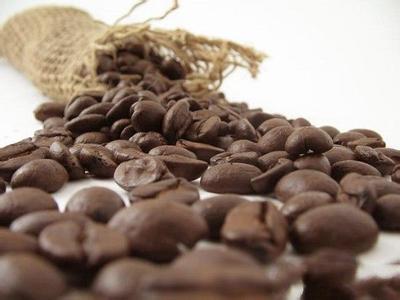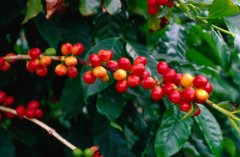Two methods for processing fresh coffee beans: wet treatment and drying

wet process
Wet treatment requires the use of specific equipment and large amounts of water. When properly handled, it ensures that the original quality of the coffee beans is better preserved, producing homogeneous coffee beans with very few bad beans. As a result, coffee beans produced in this way are generally considered to be of better quality and cost more.
Even after careful harvesting, a certain amount of partially dried and immature coffee cherries, as well as some small stones, dust, etc., will appear in the mature coffee cherries to a greater or lesser extent. In the drying method, initial sorting and washing of coffee cherries is usually necessary and should be done as soon as possible after harvest. This washing of coffee beans can be done in a container filled with running water. Sieves can also be used to help separate ripe coffee cherries from unripe, large and small coffee cherries.
After sorting and washing, the fleshy part is removed from the coffee cherries, an operation that is key to distinguishing between drying and wet processing, since in wet processing the flesh is removed before the drying stage. Pulping is accomplished by crushing coffee cherries in a machine with one fixed side and one movable side. The flesh and skin of the fruit remain on one side while the parchment-wrapped beans remain on the other. The spacing between the surfaces is just right to avoid damage to the coffee beans. Pulp removal should be carried out as soon as possible after harvest to avoid spoilage affecting the quality of the beans. The de-pulped coffee beans are then transported to a sieve to separate the unpulped or impure coffee cherries, as well as the large pulp that was previously left with the beans. The depulped coffee beans separated by the sieve are then passed through a tank where they are further separated by flotation before being sent to the next stage. Since the pulp removal is performed by a machine, this means that it always leaves out residual pulp, glue adhering to parchment around the beans, etc., which must be removed to avoid degradation of the finished product due to coffee bean contaminants. Freshly pulped coffee beans are placed in huge fermentation vessels, where the gum is broken down by natural enzymes until it is dispersed, at which point it can be washed away. The fermentation process must be carefully monitored in order for coffee beans to achieve the desired fermentation flavor. For most coffee bean slurries, the removal process takes between 24 and 36 hours, depending on temperature, thickness of the surface layer of the slurry, and enzyme concentration. The end of the fermentation process is determined by its feel, as the parchment texture of the coffee beans changes out of balance and produces a coarser pebbly feel.
After the fermentation process, the beans are rinsed in a container filled with clean water or in a special washing machine. At this stage, wet parchment coffee beans have a moisture content of approximately 57%. To reduce humidity to 12.5% , coffee beans are dried in the sun or in a desiccator, or both. Sun drying is done on broad flat or brick floors, straw mats or tables made of good quality wire mesh. Coffee beans are spread in a 2x10cm layer and need to be turned from time to time to ensure they are dry. Sun drying takes 8 to 10 days, depending on the ambient temperature and humidity. Coffee beans will work faster if left on a table because of the ventilation effect of warm, upward air. If you want to speed things up on a large farm plantation at the peak of the harvest season, it is necessary to use a dryer that uses hot air, because coffee beans are much more efficiently dried on trapezoidal fields. However, this process must be carefully controlled to achieve satisfactory and economical drying without compromising quality.
After drying is complete, coffee beans made by wet processing or parchment coffee beans, as they are called, are stored and remain in this state until just before export.
The final stage of coffee bean preparation, known as the "smoking" stage, is usually carried out in a specific factory and just before the coffee export trade. Coffee beans are stripped of the parchment inner skin and then subjected to a series of cleaning, screening, sorting and grading operations that are suitable for both wet and dry processing. An electronic sorting machine can be used to remove bad beans, including those that are difficult to identify with the naked eye and are called foul.
Wet processing is generally used for all Arabica coffee production, except for the portion produced in Brazil and the countries mentioned above where Arabica coffee is produced by dry processing. Robster coffee is rarely wet processed.
Coffee beans are seeds in cherries that resemble fruits, and when they mature, the epidermis (outer skin) appears red. Each fruit is surrounded by a parchment-like skin. Under the flesh of this fruit (i.e., in the middle of the flesh) lie two coffee beans flat on one side. When the fruit ripens, a thin and delicate layer of glue surrounds the parchment. The seeds under the parchment are covered by a thinner film, the silver pericarp (seed coat). Each cherry fruit, generally, contains two coffee beans; if there is only one, it must assume a more rounded shape, known as a pea coffee bean. Coffee beans must be removed from the fruit and dried before roasting; this process can be done in two days, either by drying or wet treatment. When this process is complete, the beans to be roasted are called green beans.
drying method
The drying method, also known as the natural method, is the oldest and simplest and does not require any machinery. This method involves drying the whole cherry fruit. There are also many variations in the implementation of this process, depending on the size of the farm plantation, the equipment available and the quality of the final requirements. The basic three steps are cleaning, drying and peeling, which are described in detail below.
First, harvested cherries are usually sorted and cleaned, picking out the underripe, overripe and damaged cherries, and removing dust, dirt, twigs and leaves. This is usually done by hand, using a large sieve. Any unwanted cherries and other substances can be left in the top of the sieve and picked out. The ripe cherries are also separated by flotation in the sink, and are close to the drying stage. Coffee cherries are spread out in the sun on large concrete floors, brick platforms or straw mats raised to the middle of a fork rack. As the coffee cherries dry, apply a rake or flip to make sure they are drier. It takes about 4 weeks for coffee to dry to the optimum humidity of 12.5%, depending on weather conditions. On larger farms or plantations, coffee cherries are sometimes dried to speed up the process after they have been exposed to the sun for a few days. The drying process is the most important stage of the whole process because it affects the final quality of the green coffee beans. Coffee beans that are too dry will become crispy and will cause a lot of broken beans when peeled (broken beans are considered bad beans). Coffee beans that are not completely dried will be too moist and will easily deteriorate once the bacteria attack.
After drying, the cherries are stored in special soil piles until they are transported to the mill, peeled, sorted, graded, and packaged. These processes will take place there. All the outer skins of the dried coffee cherries are removed in a step performed by the peeling machine.
95% of Arabica coffee produced in Brazil is produced by drying, most of Ethiopia, Haiti and Paraguay are also produced by this method, and it is also used in India and Ecuador for some Arabica coffee production. Almost all Robertson coffee is produced in this way. This rule is not practical in areas where the humidity is high or where the harvest season is often rainy next month.
Important Notice :
前街咖啡 FrontStreet Coffee has moved to new addredd:
FrontStreet Coffee Address: 315,Donghua East Road,GuangZhou
Tel:020 38364473
- Prev

The basic knowledge of initial processing and roasting of Coffee beans
The harvest time is different in different countries and regions. The harvest process requires a lot of manpower, especially high-quality selected coffee, which can only pick fully ripe red coffee cherries. Because all coffee cherries don't ripen at the same time, you need to go back to the same tree many times to pick. Coffee beans come from a mature seed called coffee cherry (cherries).
- Next

The beans of coffee are taken in the sun. Wash and bask in half the sun. Semi-washing
Today, I'd like to introduce the way to get beans from coffee: everyone knows citrus. Banana。 Apples and other fruits are rich in organic acids, immature fruits eat sour and astringent taste, ripe fruits taste sweet and delicious, because the organic acids of the fruit are converted into sugar. Coffee should also be picked after it is red and ripe, and the beans are more sweet. If the coffee farmer wants to save trouble, regardless of the coffee fruit
Related
- Beginners will see the "Coffee pull flower" guide!
- What is the difference between ice blog purified milk and ordinary milk coffee?
- Why is the Philippines the largest producer of crops in Liberia?
- For coffee extraction, should the fine powder be retained?
- How does extracted espresso fill pressed powder? How much strength does it take to press the powder?
- How to make jasmine cold extract coffee? Is the jasmine + latte good?
- Will this little toy really make the coffee taste better? How does Lily Drip affect coffee extraction?
- Will the action of slapping the filter cup also affect coffee extraction?
- What's the difference between powder-to-water ratio and powder-to-liquid ratio?
- What is the Ethiopian local species? What does it have to do with Heirloom native species?

